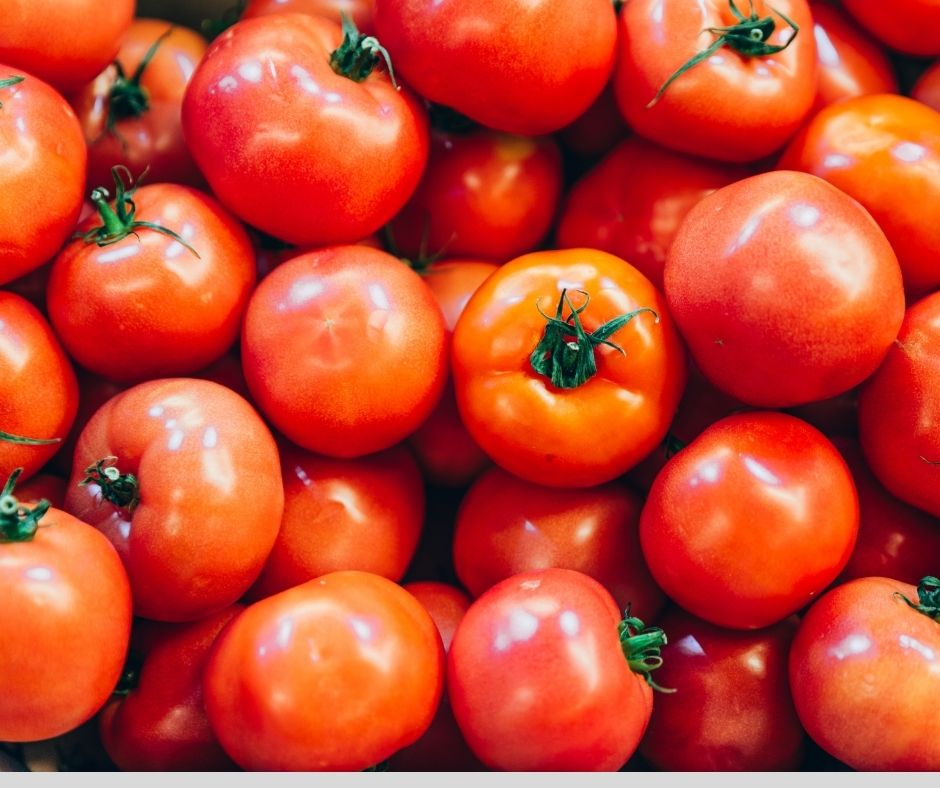
Tomatoes, and why buying local is not all of the answer.
At this time of year, we are all busy planting seeds, bringing on seedlings and looking forward to harvesting fruit and vegetables throughout what we hope will be a long hot summer. Tomatoes are favourites with gardeners, polytunnel planters and windowsill growers. This simple plant can tell us a lot about climate change.
First of all, to answer an age old question, is tomato a fruit or a vegetable? The juicy tomato is the edible berry of the plant Solanum lycopersicum. Tomatoes originated in western South America and Central America, which gives you a clue about the conditions the plant enjoys most.
Most tomatoes coming to the UK are grown in open fields. Most are fertliised, a key contributor to greenhouse gas emissions and, depending upon the weather, water may be pumped into the fields. If the pump is powered using energy generated from fossil fuels, this will also contribute to greenhouse gas emissions. That said, according to Sarah Bridle in her book “Food and Climate Change”, the total emissions per gram of tomatoes is just 0.16g. For comparison, 1g of milk is responsible for 2g of emissions and, on a global scale, for greenhouse gas emissions from food to start to fall, we should each try to stick to a diet which produces 3kg emissions per day.
So, at 0.16g tomatoes are looking good, right?
This is where the story gets a little more complicated. The tomato growing season here in the UK is short, and here in Scotland the chances of having a summer long enough and warm enough to get a commercial crop grown outdoors are slim. But we are used to being able to get tomatoes all year round, which means growing tomatoes beyond the UK growing season. What if the tomatoes are grown out of season, in a heated greenhouse or polytunnel perhaps?
In these circumstances fossil fuels are often used to heat the space and circulate water, and often nutrients, and to keep the air flowing to prevent diseases. The amount of energy needed to grow the tomatoes will vary depending on how much heat is added, how much the plants are watered etc, but commercial tomato production can result in over 10kg of emissions for just 1kg of tomatoes! Again, according to Sarah Brindle, the figure is 13g emissions per 1g tomatoes.
So that’s 13g for tomatoes raised in a heated greenhouse compared to 0.16g for seasonally grown fruit.
Suddenly seeking out the “Grown in UK” sign on packs of tomatoes during winter doesn’t seem like the best decision.
According to Professor David Reay, a climate scientist from the University of Edinburgh, we can’t simply assume that closer is better. In fact, according to government data, buying a tomato grown in the UK has three times the footprint of a tomato grown in Spain. And this is not just a UK issue, a study in the Journal of Food Production showed that in the Netherlands, consuming tomatoes imported from Sweden would have been more climate-friendly than consuming local Dutch tomatoes.
In winter we can go further afield, as the energy used to heat greenhouses to grow tomatoes in the UK in winter is greater than the energy used to transport tomatoes to the UK from unheated greenhouses in Morocco.
When it comes to making climate friendly food choices, we are used to thinking in terms of food miles; the fewer the food miles the better, but we can see that this isn’t always the case. When it comes to climate change, how food is produced can be more important that where it is produced.
So, the message is not a simple as buy local. It is buy local AND seasonal. Or better still, grow your own!
And these considerations only take into account the carbon footprint of the tomato! You might also want to consider that morrocco is a water scare country and tomatoes are a water intense crop. And that as the tomoto growing industry increases, with partnerships between Dutch growers and importers more and more common (the majority of moroccon snack tomotoes are packaged in Holland!), more land is being taken, often from small communities and indigenous tribes, to build greenhouses.
In our connected world, with truly global trade routes, a world experiencing climate challenges from lots of different directions, food really is a complex issue. The message that it is best to grow your own remains simple and true!
